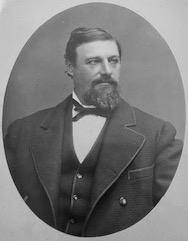 Pilot Boat Columbia | |
| History | |
|---|---|
| Name | Columbia |
| Owner |
|
| Operator | Henry Seguine |
| Builder | C. & R. Poillon, Brooklyn, New York |
| Cost | $16,000 [1] |
| Launched | November 15, 1879 |
| Out of service | December 3, 1883 |
| Fate | Sank |
| General characteristics 1st Columbia | |
| Class & type | schooner |
| Tonnage | 90 TM [2] |
| Length | 87 ft 0 in (26.52 m) [3] |
| Beam | 21 ft 4 in (6.50 m) [2] |
| Draft | 82 ft 0 in (24.99 m) [3] |
| Depth | 8 ft 6 in (2.59 m) [3] |
| Propulsion | Sail |
| Sail plan | 75 ft 0 in (22.86 m) [3] |
| Notes | Maryland oak with Locust Stanchions [3] |
| History | |
| Name | Columbia |
| Owner | Captain Thomas Cooper |
| Operator | Thomas Cooper, E. G. Martin, John C. Fawcett and Joseph Fawcett |
| Builder | Ambrose A. Martin |
| Cost | $16,000 |
| Launched | May 17, 1894 |
| Out of service | November 26, 1898 |
| Fate | Sank |
| General characteristics 2nd Columbia | |
| Class & type | schooner |
| Tonnage | 89 TM [4] |
| Length | 95 ft 0 in (28.96 m) [5] |
| Beam | 21 ft 4 in (6.50 m) [5] |
| Depth | 12 ft 0 in (3.66 m) [5] |
| Propulsion | Sail |
| Speed | 14 knots |
| Notes | Painted black, Spars by Henry Pigeon |
The Columbia was a 19th-century pilot boat built C. & R. Poillon shipyard in 1879 for Sandy Hook and New York pilots that owned the Isaac Webb, which was lost off Quonochontaug Beach, Long Island in July 1879. She was run down by the Guion Line steamer SS Alaska in 1883. A second pilot-boat, also named Columbia, was built by Ambrose A. Martin at East Boston in 1894 that had a unique spoon bow and was extremely fast. She was thrown ashore in the great Portland Gale, and remained on the Sand Hills beach in Scituate, Massachusetts for over thirty years as a marine curiosity. [6] : p163 [7] The Louise No. 2 replaced the ill-fated Columbia.


